Castell Morgraig
Ruined castle on Cefn-Onn ridge above Cardiff, south Wales
(Words/photos: Mike Slocombe, December 2004)
I stumbled across this old castle when taking a Christmas day walk up Caerphilly mountain from north Cardiff.
Unusually, the castle ruins are completely unmarked - at first I thought it was an abandoned farmhouse until I noticed the thickness of the walls and the layout.
The ruins can be accessed from a small footpath leading out of the east end of Travellers' Rest pub car park at the top of Caerphilly Road.
ABOUT THE CASTLE
Located 800 feet up on Cefn-Onn ridge above Cardiff, this ancient ruin has intrigued and baffled historians for over a century.
Built in the 13th century when it straddled the border between Welsh Senghennydd and English Glamorgan, the castle overlooked Cardiff and guarded the important route from the city to the valleys.
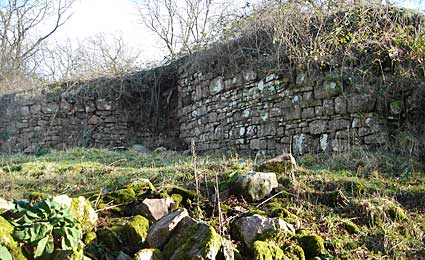
One of the surviving south-facing castle walls exposed during the 1895 excavations
Constructed from red marley sandstone aggregate and lime and marl sand mortar, the castle - an irregular pentagonal enclosure some 38-42m in diameter - incorporates several unusual construction and design features which have made it very difficult to definitively trace its heritage.
John Ward, an archaeologist from the Cardiff Museum, resolved to solve the mystery of Morgraig in 1895, and oversaw the excavations on the south side of the ridge overlooking Cardiff.

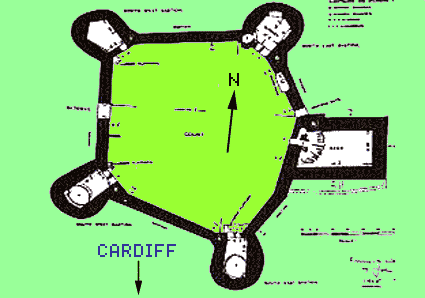
Plan of layout of Morgraig Castle
Ten years later he concluded that Castell Morgraig was a 13th century castle (and not an ancient British fort as rumoured locally) but he failed to end the fierce debate about the ruins.
Who built the castle and why? Was it built by the native lord of Senghennydd and the scene of the Welsh Alamo, where a Welsh rebellion was defeated in 1315?
Or was it simply a minor Anglo-Norman castle of no historical importance?
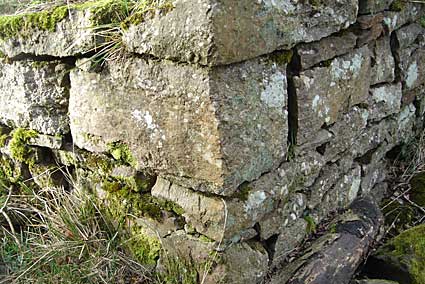
Stone doorway detail of north facing tower
MODERN RESEARCH
In 1997, the Royal Commission on Ancient and Historical Monuments in Wales asked 'history detective' Jack Spurgeon to investigate the castle ruins and establish the facts.

It wasn't an easy job. Jack discovered that it was a "very odd castle" noting archaic features which would suggest a Welsh origin, contradicted by a lack of trademark Welsh ditches (usually the most impressive features of the Welsh castles of north Wales).
His investigations revealed an unusual shaped building with five towers, one with the remains of a spiral staircase, which would be unusual on a Welsh castle. The presence of carved stones - used as dressings for doorways and windows - once again suggests an English design.
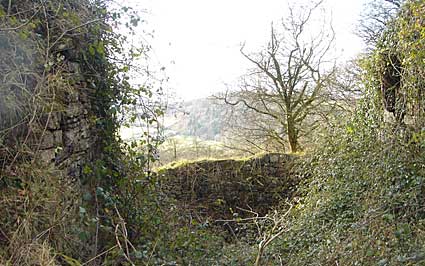
Looking south west through the remains of a tower
But other visible features are more confusing. Flanking towers at each corner were a 13th-century development which the Welsh had hardly adopted, but the keep and modest entrance are both archaic features which suggest Welsh construction.
The carved stones provided the biggest clue. The Sutton stone used came from a single, isolated quarry near Ogmore and Southerdown and the supply was
was exhausted by the end of the Middle Ages.
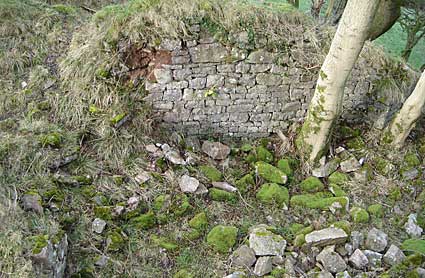
Looking down at the remains of north east tower
From 1243 onwards there was constant tension between the Anglo-Normans on the fertile lowlands of Glamorgan and the Welsh lords in control of the highlands of Rhondda, Rhymni and Taff valleys.

By 1246, Richard de Clare had annexed two of the Welsh lordships, Glynrhondda and Meisgyn, leaving only Senghennydd in native hands. In 1257, there was further pressure as Llywelyn the Last extended his influence down to Glamorgan and even entered it to destroy the de Clare castle at Llangynwyd.
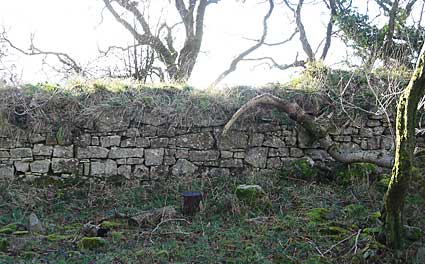
Looking south from inside the castell ruins
Jack Spurgeon concludes that "It's inconceivable that the Welsh lord of Senghennydd would have been able to get Sutton stone in this period for Morgraig" adding that, "it's inconceivable too that Richard de Clare would have allowed him to build a castle looking right down into Cardiff".
This places the castle's construction down to a 24 year period up to 1267. During this time, the de Clare lords and the Welsh lord of Senghennydd were facing each other across the very ridge on which Morgraig is built.
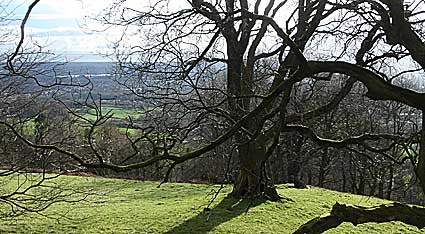
View from south west side of the castle, looking over Cardiff
Jack Spurgeon favours Earl Richard and a building date of 1243-62, with the castle guarding the main road into Cardiff and designed to catch marauders on the way back.
But not everyone agrees, with supporters of the Welsh theory saying the castle would have been built to threaten Cardiff.
But whoever built the castle, it's unlikely that it was ever finished, with no evidence of roofing materials or internal buildings found on site. It's likely the castle was abandoned unfinished as the de Clares defeated the last Welsh native lord in the area and started building Caerphilly Castle nearby.

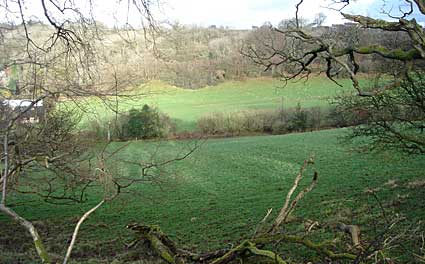
The north facing walls of the castle look are on Graig Llanishen, overlooking Cefncarau
LATEST RESEARCH
In 1997, staff and pupils of the nearby St.Cenydd School, Caerphilly embarked on a project to investigate the mystery of Castell Morgraig.
Martin Williams, the school's Head of History, offers his findings on their website:
 Who Built Castell Morgraig? Who Built Castell Morgraig?
I cannot believe that the master castle builders of Richard and Gilbert de Clare, rich and powerful as they were, would have built such a roughshod castle, not when you look at Cardiff and Caerphilly castle as comparisons.
Class 824 to my mind have reached near enough the right conclusion. Perhaps the Sutton Stone was acquired to build the castle during a period of 'friendliness' between the de Clares and the Lords of Senghenydd.
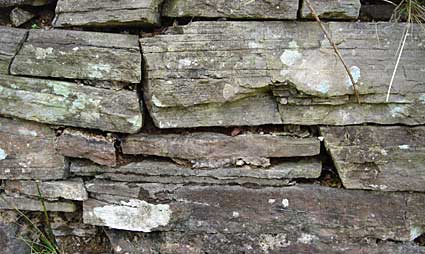
Stonework detail
Maybe it was acquired when Gilbert inherited Glamorgan, as a sign of trust and understanding between the Welsh in northern Senghenydd and the Normans in what was the southern part of that territory.
The castle structure and position seems to indicate that it was erected by Welsh masons and in a hurry, but the evidence also points to the fact that it was never fully completed - not by the Welsh anyway.
With Llewelyn steadying himself for a confrontation with the Normans, finding allies such as Grufydd ap Rhys, and refusing to pay homage to the Kings of England, it is not surprising that the Welsh were starting, by the 1260's, to think of defending their homes and lands.
It is also not surprising that either Richard, but more likely Gilbert de Clare, could not allow such a fortification as Castell Morgraig to be erected overlooking strategically and commercially important Cardiff.
Why did the Normans then allow Castell Morgraig to be built to the size that it was? Who knows..?
This is only a theory, but perhaps they wished to take over a near completed castle in order to further fortify it against the Welsh - a kind of staging post before the final push into Caerphilly and beyond.
MORE INFO:
 Castell Morgraig history Castell Morgraig history
 Morgraig school project Morgraig school project
LOCATION INFO:
 Local map showing castle location Local map showing castle location
Ordnance Survery ref: OS ST 160843
Grid reference: N 183997, E 316001/
« back to Wales photo homepage More Castell Morgraig photos »
|
|

